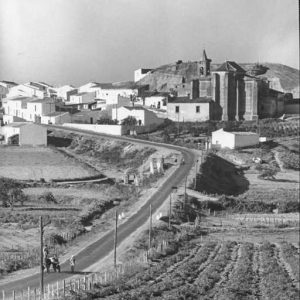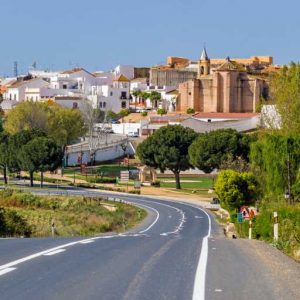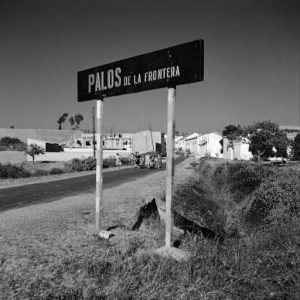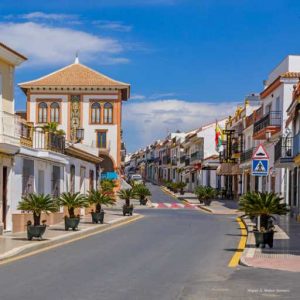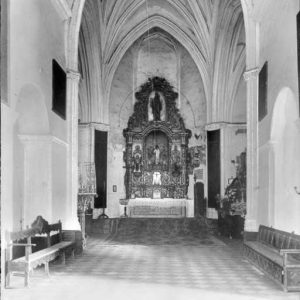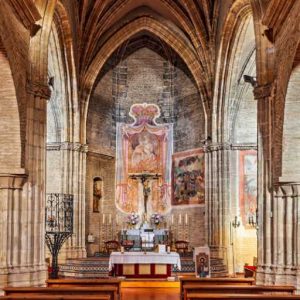Palos: Past and Present
Many of us have etched in our memories more or less historical photographs of our locality. Some may recall the famous photo of the priest of Palos at the door of the Pinzón house with some girls, ladies, and other people strolling down the street or at the doors of their houses. Others may remember countless postcards of La Fontanilla, with or without agave plants, with a dirt path behind it, or partially buried with Father Sebastián pointing to it. Or those of our parish of San Jorge, both from the outside and its interior. Countless images of our mother and patroness, the Virgin of Miracles, when dressed in fine fabrics, without the vestments but with polychromy, after the restoration carried out at the end of the Civil War, walking by the estuary in a boat or in her processions and pilgrimage. Many other well-known ones of the Convent of La Rábida and its surroundings, the gardens, the Column of the Discoverers, or with the famous palm tree on the descent of said column, traditionally called “Columbus’s palm tree.” So many snapshots that have shown us a bit of the history of our city in the last almost two centuries.
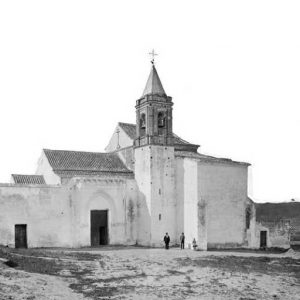
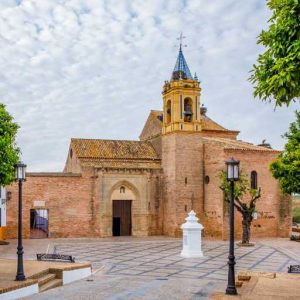
Church of San Jorge Mártir.
I received the commission from our City Council, through its mayor, Mr. Carmelo Romero, to organize and carry out an exhibition that could collect all the most relevant historical photographs of Palos de la Frontera and confront them with others that I would take currently to see in this comparison the passage of time and the transformation that our municipality has undergone. This assignment was very exciting for me because, as many know, I am an enthusiast of our local history, and I am passionate about research. However, it also represented one of the greatest challenges I had faced in my professional work. I began to search, logically, among the archives of my father, Gonzalo Muñoz, who dedicated so many years to this noble profession. I obtained many clues for my search, also among the residents of Palos who, anonymously and unselfishly, started offering me images of all kinds—many of which I already knew and others of great value that were unknown to me. I must express my gratitude to the Arjonilla family for making the personal archive of Mr. Manuel Arjonilla, a pharmacist in our town for many years, entirely available to me. I found true gems for the realization of this work in his archive.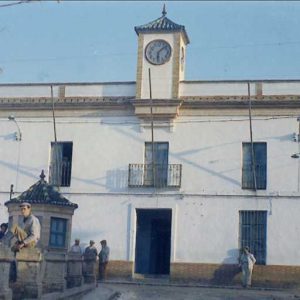
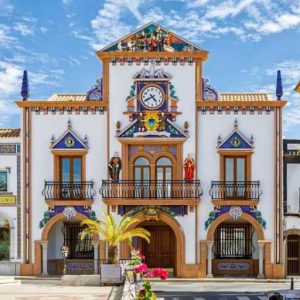
Comparison of the Town Hall, 1950s, 2019.
I also located a large number of historical images of our city in the Photographic Heritage photo library, which our City Council wisely acquired to preserve in our local archive. Among them are many from the Portuguese photographer Antonio Passaporte, who worked in Spain for the Loty photographic house between 1927 and 1936, taking numerous snapshots of Spanish monuments. The collection also includes works by the French photographer Jean Laurent, one of the most important photographers of the 19th century, who became the official photographer of the Spanish Royal Family and captured countless panoramic views of cities, landscapes, monuments, and works of art on the peninsula.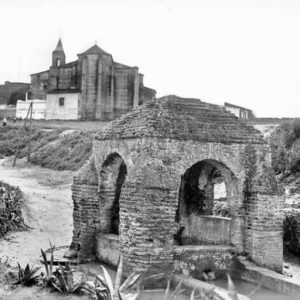
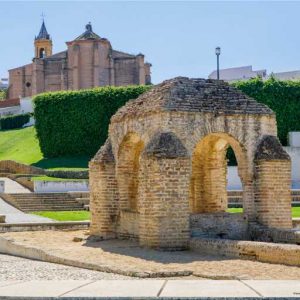
La Fontanilla area, “Loty” archive, and present day.
However, as it often happens, I obtained the best find almost by chance. At one point in my research, I came across a photo of the water carriers of Palos arriving at the town hall square distributing the liquid element. It was in a group on the social network Facebook called “Fotos Antiguas de España” (Old Photos of Spain). They also shared photos of a well-known shopkeeper from our town. Following this lead, I identified the author of the photos, Frank J. Scherschel, an American photographer who visited us in October 1954. He took about 600 photos, both in black and white and color—of which I located all—and reflected the daily life of the humble people of Palos in those years. He had been working for the famous LIFE magazine, in which the report appeared on six of its pages, with a text entirely dedicated to our historic town. Our city council has also appropriately acquired one of the copies of that magazine to be kept in our archive.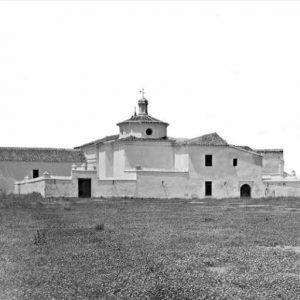
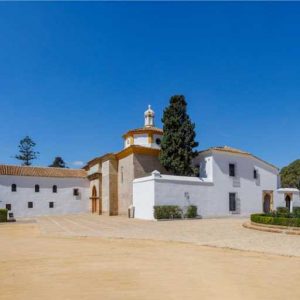
Monastery of Santa María de la Rábida.
With this vast amount of material and in the company of our archivist and local historian, Mr. Eduardo García, we selected the images that make up this exhibition and those that I needed to repeat from the same angle—or approximate—in the present to be able, as I mentioned before, to compare the transformation that our locality has undergone. This last task has resulted in some challenging shots, as taking some of the photos from the same angle in the present was practically impossible due to the profound changes that some of the locations had undergone. Therefore, it was necessary to slightly change the angle in some of them.